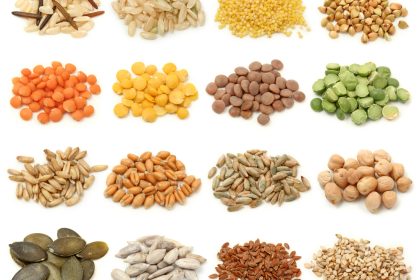Diabetes affects over 37 million Americans, with millions more living with prediabetes. While conventional medical treatments remain essential for many, growing research suggests that certain traditional foods consumed by our ancestors may help regulate blood sugar levels and potentially reverse some aspects of type 2 diabetes. These ancestral eating patterns—developed long before the rise of processed foods and sedentary lifestyles—might hold keys to addressing modern metabolic disorders.
Understanding the ancestral advantage
Human metabolism evolved over thousands of years alongside specific food sources and eating patterns. Many researchers now believe the dramatic shift away from these traditional dietary approaches contributes significantly to the rising rates of metabolic disorders, including diabetes.
The first concept worth understanding is metabolic flexibility—the body’s ability to efficiently switch between burning carbohydrates and fats for energy. Our ancestors naturally developed this flexibility through periods of feast and famine, along with diets rich in whole foods that required significant digestion. Modern lifestyles featuring constant food availability and highly processed carbohydrates have diminished this metabolic adaptation in many people.
Evidence suggests that people with type 2 diabetes often display reduced metabolic flexibility, with their bodies struggling to properly regulate blood glucose and utilize insulin. Ancestral eating patterns may help restore this flexibility through several mechanisms, including reduced insulin spikes, improved gut microbiome diversity, and enhanced cellular sensitivity to insulin.
The relationship between inflammation and diabetes provides another important connection. Chronic low-grade inflammation appears to play a significant role in insulin resistance, the hallmark of type 2 diabetes. Many traditional foods contain bioactive compounds that naturally combat inflammation, potentially addressing one of the root causes of blood sugar dysregulation.
Fermented foods restore gut balance
The first category of ancestral healing foods involves fermented products, which have been staples across diverse traditional cultures worldwide. From Korean kimchi to Eastern European sauerkraut to traditional buttermilk, fermented foods provided our ancestors with natural probiotics long before this term entered the modern lexicon.
Recent research from Stanford University demonstrated that a diet high in fermented foods significantly increases gut microbiome diversity and decreases inflammatory markers. This proves particularly relevant for diabetes management, as mounting evidence connects gut health directly to glucose metabolism.
The microorganisms in fermented foods produce short-chain fatty acids that appear to improve insulin sensitivity. Additionally, these beneficial bacteria help regulate hormones involved in hunger and satiety, potentially aiding weight management—a crucial factor for many with type 2 diabetes.
Practical incorporation of fermented foods requires starting slowly to avoid digestive discomfort. Beginning with small amounts—perhaps a tablespoon of sauerkraut with dinner or a few ounces of unsweetened kefir in the morning—allows the digestive system to adapt gradually. The goal might involve working toward 1-2 servings daily of various fermented options.
Commercial availability of these foods has expanded dramatically, but many contain added sugars that counteract their benefits for those managing diabetes. Reading labels carefully or preparing homemade versions ensures these ancestral foods retain their therapeutic potential. Simple home fermentation requires minimal equipment and provides substantially more probiotic diversity than most commercial products.
Wild-caught fatty fish provide essential nutrients
The second ancestral food category includes fatty fish, which comprised a significant portion of traditional diets in coastal regions worldwide. Archaeological evidence shows that omega-3 fatty acids from marine sources played a much larger role in ancestral nutrition than in typical modern diets.
Fatty fish like salmon, mackerel, sardines, and herring contain substantial amounts of EPA and DHA—omega-3 fatty acids that appear to improve insulin sensitivity and reduce inflammation. A comprehensive review published in Lipids in Health and Disease found that omega-3 supplementation significantly improved glucose metabolism in people with type 2 diabetes.
Beyond omega-3s, these fish provide high-quality protein that helps regulate blood sugar by slowing digestion and promoting satiety. They also contain vitamin D, often deficient in people with diabetes and increasingly recognized for its role in glucose metabolism.
Traditional preparations often involved consuming the entire fish, including nutrient-dense organs and bones that provided additional minerals like calcium and magnesium—both important for insulin signaling pathways. Modern equivalents might include canned salmon with soft bones or small fish like sardines consumed whole.
For practical implementation, nutrition experts typically recommend 2-3 servings of fatty fish weekly. Those concerned about environmental contaminants can focus on smaller species like sardines and herring, which contain fewer accumulated toxins than larger predatory fish while still providing substantial omega-3 benefits.
Bitter greens regulate blood sugar
The third ancestral food group encompasses bitter greens, which featured prominently in traditional gathering and early agricultural practices but have largely disappeared from modern plates. Dandelion greens, chicory, endive, arugula, and bitter melon all belong to this category of historically important foods.
These bitter-tasting plants contain compounds that stimulate digestive function and appear to directly impact glucose metabolism. Research published in the Journal of Ethnopharmacology documented that bitter melon contains phytochemicals that mimic insulin action and activate cellular pathways involved in glucose uptake.
Traditional medical systems worldwide recognized the value of bitter flavors for digestive health. Modern research now confirms that bitter compounds stimulate the release of incretin hormones, which enhance insulin secretion in response to meals. This effect may help flatten postprandial blood sugar spikes—a significant concern in diabetes management.
The bitter flavor profile also naturally limits overconsumption, potentially supporting portion control without conscious restriction. Our ancestors likely consumed these plants regularly as part of their gathering activities, obtaining both their nutritional and medicinal benefits.
Practical incorporation might begin with adding arugula to salads or sautéing dandelion greens as a side dish. For those unaccustomed to bitter flavors, starting with milder options like radicchio before exploring more intense bitters like dandelion helps build tolerance gradually. Bitter melon, widely used in Asian cuisines, can be prepared in stir-fries or as tea specifically for its glucose-lowering properties.
Tubers and resistant starch offer prebiotic benefits
The fourth ancestral food category involves specific preparation methods for starchy foods that transform their metabolic impact. Archaeological evidence suggests our ancestors often consumed starchy tubers and roots that were cooled after cooking—a process now known to increase resistant starch content.
Resistant starch acts as a prebiotic fiber, feeding beneficial gut bacteria rather than being fully digested and absorbed as glucose. When certain starchy foods like potatoes, sweet potatoes, and cassava are cooked and then cooled, their starch molecules reorganize into forms more resistant to digestion.
Research published in Nutrition & Metabolism demonstrated that resistant starch improves insulin sensitivity, reduces postprandial glucose levels, and enhances satiety. The fermentation of resistant starch in the colon produces short-chain fatty acids that appear to improve metabolic health through multiple pathways.
Traditional preparation methods like fermenting starchy foods or cooking and cooling them naturally increased resistant starch content. These techniques transformed what could be high-glycemic foods into options with substantially lower blood sugar impact—a valuable approach for those managing diabetes.
Practical application involves cooking starchy foods like potatoes and rice, then refrigerating them for at least 12 hours before consuming. This cooling process increases resistant starch content significantly. Eating these foods cold, such as in potato salad or rice salad, maximizes the resistant starch benefit. Reheating reduces some but not all of the resistant starch formed during cooling.
Spices and herbs provide medicinal compounds
The fifth ancestral food group involves culinary herbs and spices, which served both flavoring and medicinal purposes in traditional cultures. Archaeological evidence shows that spice use dates back thousands of years, with many traditional cuisines incorporating specific herbs known to regulate blood sugar.
Cinnamon stands out among these traditional spices for its substantial research support in diabetes management. A meta-analysis published in the Journal of the Academy of Nutrition and Dietetics found that cinnamon supplementation significantly reduced fasting blood glucose and improved cholesterol profiles. The bioactive compounds in cinnamon appear to enhance insulin signaling and reduce insulin resistance.
Turmeric, central to traditional Indian cuisine, contains curcumin—a compound with potent anti-inflammatory properties. Given the role of inflammation in insulin resistance, research suggests curcumin may help address this underlying factor in type 2 diabetes. A clinical trial published in Diabetes Care found that curcumin supplementation prevented prediabetes progression to full diabetes in 16.4% of participants, compared to 100% in the placebo group.
Fenugreek seeds, used in traditional Middle Eastern and Indian cooking, contain soluble fiber and compounds that slow carbohydrate digestion and improve insulin sensitivity. Clinical studies show that fenugreek can lower fasting blood glucose and improve glucose tolerance in people with type 2 diabetes.
Practical incorporation of these ancestral spices might involve adding cinnamon to morning oatmeal, incorporating turmeric into soups and stews, or using fenugreek seeds in curries. These additions require minimal lifestyle adjustment while potentially offering significant metabolic benefits.
Creating an ancestral-inspired eating pattern
While individual ancestral foods show promise for diabetes management, their greatest potential lies in combination as part of an overall eating pattern. Traditional diets worldwide share common features despite geographical differences—they consist primarily of whole foods, contain abundant plant fiber, include fermented components, and naturally limit refined carbohydrates.
Building a modern eating approach inspired by these ancestral patterns involves several practical principles that align with current diabetes management recommendations:
Emphasizing whole, unprocessed foods naturally reduces exposure to refined carbohydrates that cause rapid blood sugar spikes. This approach doesn’t necessarily mean eliminating all carbohydrates but rather choosing those with minimal processing and abundant fiber.
Incorporating protein and healthy fats with each meal helps slow digestion and moderate glucose absorption. Traditional meals typically combined these macronutrients naturally—fish served with vegetables, meats accompanied by fibrous plants, or nuts combined with fruits.
Allowing adequate time between meals mirrors the natural eating patterns of our ancestors, who rarely snacked continuously throughout the day. This approach supports metabolic flexibility by allowing insulin levels to fall between eating occasions, potentially improving insulin sensitivity over time.
Seasonal eating, another ancestral practice, naturally diversifies nutrient intake throughout the year. Modern equivalents might involve shopping at farmers markets or subscribing to community-supported agriculture programs that provide seasonal local produce.
Beyond food: ancestral lifestyle factors
Food represents just one component of ancestral wisdom relevant to diabetes management. Other lifestyle factors that complemented traditional diets also appear significant for metabolic health.
Physical activity integrated naturally into daily life, rather than occurring as separate “exercise” sessions, characterized ancestral living. Research shows that even brief movement breaks throughout the day significantly improve glucose metabolism. Modern adaptations might include walking meetings, standing workstations, or household activities performed manually rather than with labor-saving devices.
Natural light exposure and consistent sleep patterns aligned with sunrise and sunset regulated hormonal rhythms for our ancestors. Research now confirms that adequate sleep and appropriate light exposure significantly impact insulin sensitivity and glucose regulation. Creating sleeping environments free from artificial light and establishing consistent sleep schedules represent modern applications of this ancestral pattern.
Stress management through community connection and natural environments featured prominently in traditional societies. Chronic stress contributes to insulin resistance through elevated cortisol levels, making stress reduction an important component of diabetes management. Time in nature, meaningful social connections, and mindfulness practices offer modern approaches to this ancestral wisdom.
Implementing ancestral principles with medical care
For those managing diabetes, ancestral food principles work best as complementary approaches alongside appropriate medical care rather than replacements for conventional treatment. Regular blood glucose monitoring provides essential feedback on how specific ancestral foods affect individual responses, which can vary significantly between people.
Starting with small, sustainable changes typically proves more effective than radical dietary overhauls. Perhaps beginning with a single serving of fermented food daily, then gradually incorporating bitter greens or resistant starch as tolerance and preference allow.
Working with healthcare providers knowledgeable about nutritional approaches ensures safety, particularly regarding medication adjustments that might become necessary as metabolic health improves. Some medications, especially insulin and sulfonylureas, require careful monitoring when dietary changes significantly impact blood glucose levels.
The ancestral approach offers a framework for understanding metabolic health rather than a rigid set of rules. The specific foods that comprised traditional diets varied widely across geographical regions and cultures, suggesting that metabolic benefits stem from broader patterns rather than individual “superfoods.”
By reconnecting with traditional food wisdom while maintaining appropriate medical care, those with diabetes can potentially improve their metabolic health and quality of life, drawing on centuries of human nutritional experience to address modern health challenges.


















